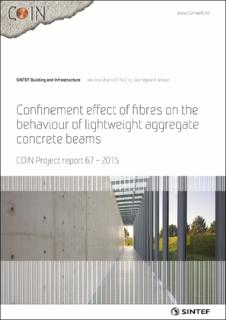| dc.description.abstract | This study focuses on ductility of lightweight aggregate concrete (LWAC) in compression. The major disadvantage of LWAC is the brittleness in compression at the material level compared to normal density concrete. Requirements for energy absorption and/or a controlled behaviour after peak load may exclude LWAC as the preferred material. In overload situations adequate ductility is essential to ensure safety. Floating offshore structures and LNG-terminals are often post-tensioned, e.g. to avoid leakage cracks in service. Thus the compressive ductility is of great importance. The influence of the stress-strain characteristics in compression is also more pronounced in structures subjected to combined bending moment and axial forces. Ductility of LWAC in compression plays an important part in improving the structural ductility in heavily reinforced and post-tensioned structures. Increase of the ductility in the compression zone in bending is possible by employing stirrups and/or fibre reinforcement to achieve passive confinement.
To study the ductility an experimental program was set up consisting of eight over-reinforced lightweight concrete beams with length 4200 mm and cross-section 300×200 mm, which were subjected to four-point bending. The beams were heavily over-reinforced to ensure spalling in the compression zone of the cross section before yielding of the tensile reinforcement. The LWAC had a mass density about 1800 kg/m3, with a compressive strength about 40 MPa. Four different confinement
configurations of the compression zone of the beams were investigated - only LWAC and three different types of fibre, 60 and 35 mm long steel fibres and basaltic fibres, all with 1% of fibre. This report presents mainly the results from the experimental investigation of the beams, with focus on the flexural response. The effect of the different confinement configurations is analysed in detail in the plastic hinge region.
The pre-peak response before initiation of spalling was approximately the same for all configurations. The spalling load was identified as the load where horizontal cracking in the compressive zone occurred. This load level was the same as the peak load for the response. An approximately 10% increase in load capacity was observed for the beams with fibre which is due to the confinement effect.
As expected, the reference beams with only LWAC in the compression zone, had a brittle post-peak response, i.e. no post-peak deformability and a very steep descending branch immediately after initiation of spalling of the concrete cover. Also the beams with different type of fibre experienced a decreased capacity after the peak load. However, some ductility was achieved, especially for the beams with steel fibres. The beams with basaltic fibres responded with a drop in capacity after peak load before gaining some deformation capacity.
The results from this investigation show that fibres do contribute to the confinement in the compressive zone. However, an acceptable ductility to be used in structural design was not achieved for the beams in this project. The ductility is influenced by many factors such as size of cross-section, curvature and amount of fibre. More research is required before conclusions can be made that LWAC have potential to be consistent with the performance requirements for structural materials with respect to ductility. | |
